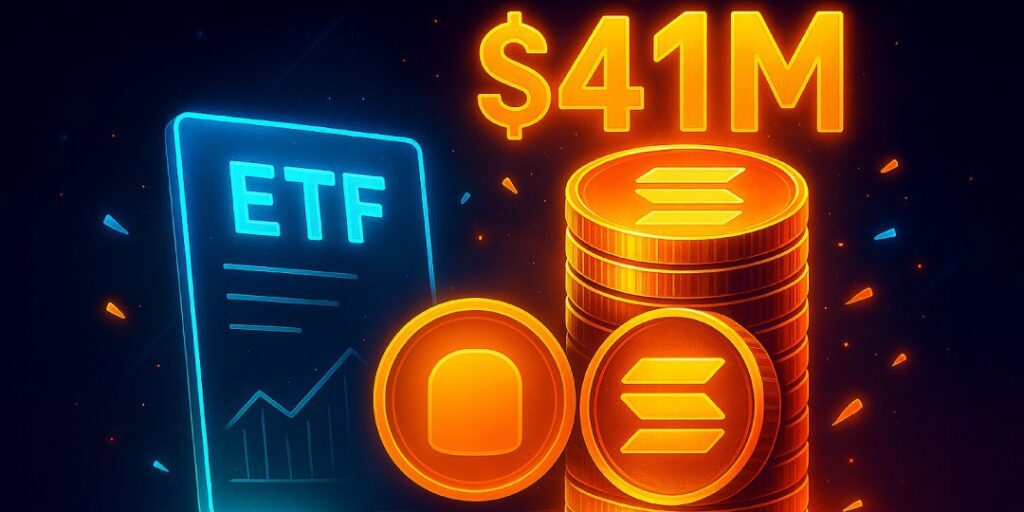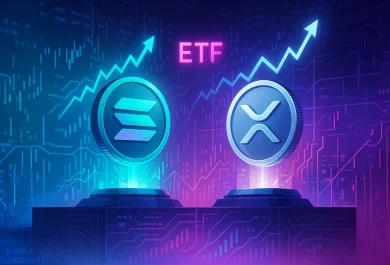Solana has captured significant investor attention after its new ETF, the REX-Osprey SOL + Staking Fund (SSK), attracted $41 million in net inflows within just one week. This marks one of the fastest capital raise for any altcoin fund this year, signaling renewed optimism in a market that has struggled since Bitcoin ETFs launched. Following the news, Solana’s price surged past $159, reigniting discussions about a potential “altcoin season” – a period where alternative cryptocurrencies outperform Bitcoin.
What makes SSK different?
Unlike standard ETFs, SSK doesn’t merely hold Solana (SOL) tokens, it actively stakes them on the Solana blockchain. This process generates 6-8% annual rewards, which are distributed to shareholders. This “yield-bearing” feature is unavailable in spot Bitcoin or Ethereum ETFs. Greg King, CEO of issuer REX Shares, describes it as enabling “Wall Street to earn blockchain rewards without managing digital wallets.” Strong early demand has already pushed SSK’s assets above rival leveraged Solana products (SOLT and SOLZ).
Regulatory shift creates opportunity
This momentum coincides with a notable regulatory development. On July 7th, the SEC released new guidelines aiming to streamline crypto ETF approvals, potentially shortening the review process to about 75 days. Solana was specifically mentioned as a token that could qualify under these new rules. Issuers report being asked to resubmit paperwork by July 31st – two months earlier than initially expected – suggesting the SEC may accelerate its decision timeline.
The impact of Solana’s $41m inflow
While $41 million pales next to Bitcoin ETFs’ $50 billion inflows, its impact on Solana’s market is substantial:
- It effectively removes approximately 260,000 SOL from circulation.
- At its current inflow rate, the fund would absorb the equivalent of one full day’s trading volume on Solana decentralized exchanges every two weeks.
- Analysts compare this consistent buying pressure to a miniature “Grayscale effect,” creating underlying price support. Bloomberg’s Eric Balchunas highlighted the fund’s rapid growth in a widely-shared social media post.
Growth catalysts for Solana
Several factors support Solana’s positive outlook:
- Firedancer Testnet: A new validator client promising 10x faster network speeds launched on devnet.
- Expanding Retail Access: Robinhood’s US wallet integration and Shopify’s Solana Pay pilot are increasing real-world usability.
- Migration to Solana: Projects like Clockwork and Helium Mobile are moving from Ethereum Layer-2s back to Solana, driving active addresses to a 3-month high.
Combined with ETF demand, these developments lead some analysts to suggest SOL could challenge its March peak of $205 if inflows continue through Q3.
Important considerations
Despite the optimism, key risks remain:
- Regulatory Uncertainty: The SEC could still classify SOL as a security in future enforcement, even while approving ETFs.
- Network Stability: Solana’s history of outages concerns institutional investors.
- Staking Rewards: Increased staking participation could dilute yields; a drop to 4% would weaken SSK’s appeal.
Is alt-season in sight?
Just as Bitcoin ETFs reshaped the crypto market in January, SSK is testing whether a yield-generating Solana ETF can catalyze similar growth for altcoins. While $41 million alone won’t trigger an altcoin season, it demonstrates genuine institutional demand for regulated altcoin exposure. The next few weeks are critical: if the SEC adheres to its accelerated approval timeline, July could mark Solana’s transition from “Ethereum competitor” to the first altcoin embraced by Wall Street via ETFs – potentially lifting the broader altcoin market.











